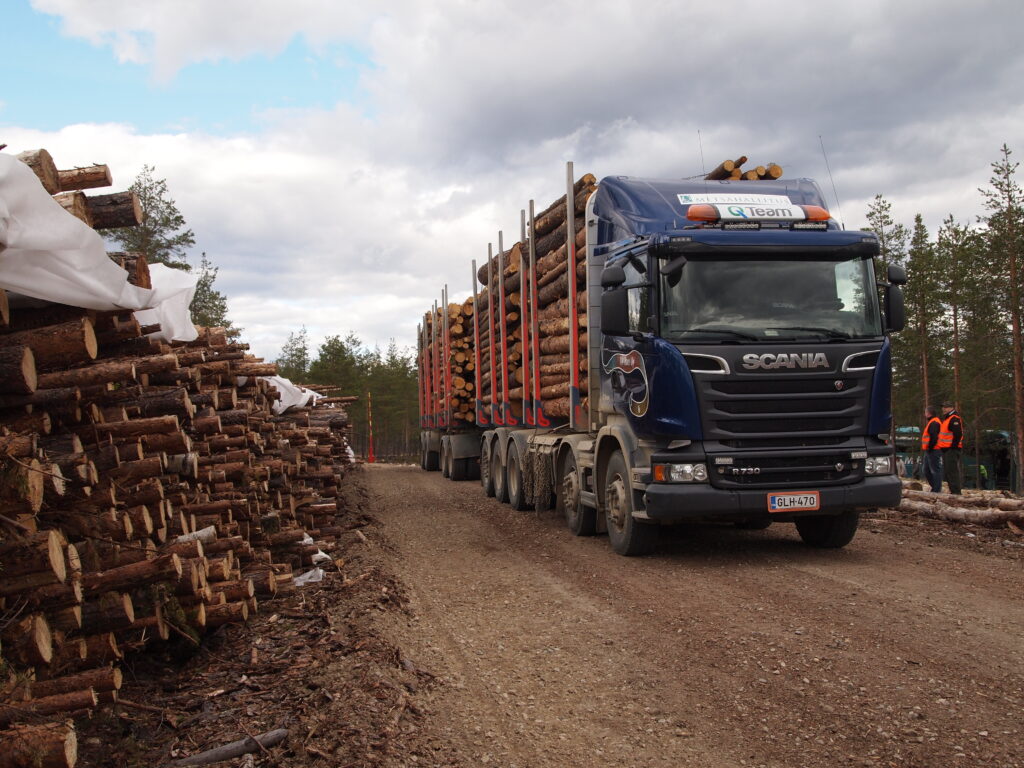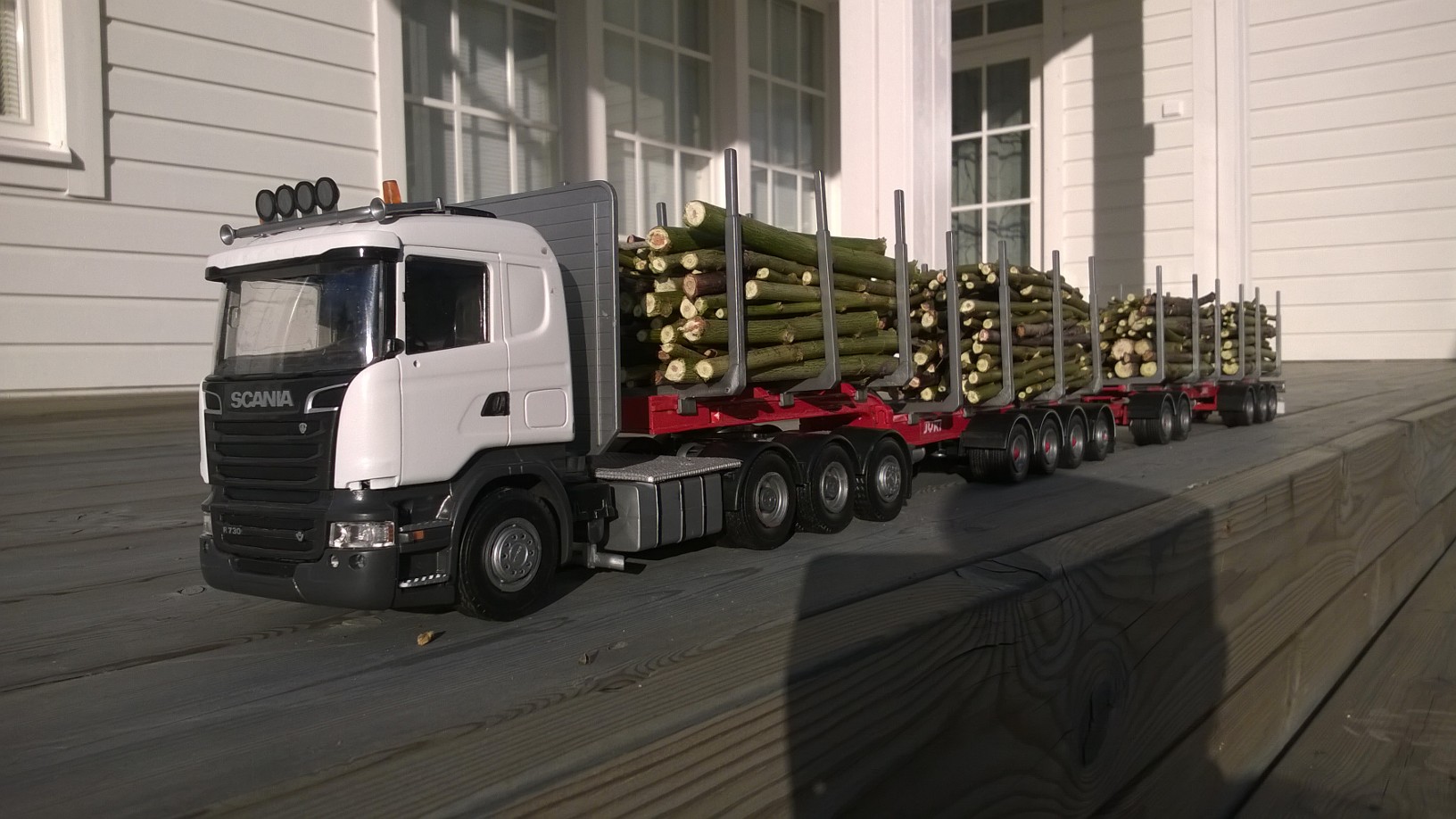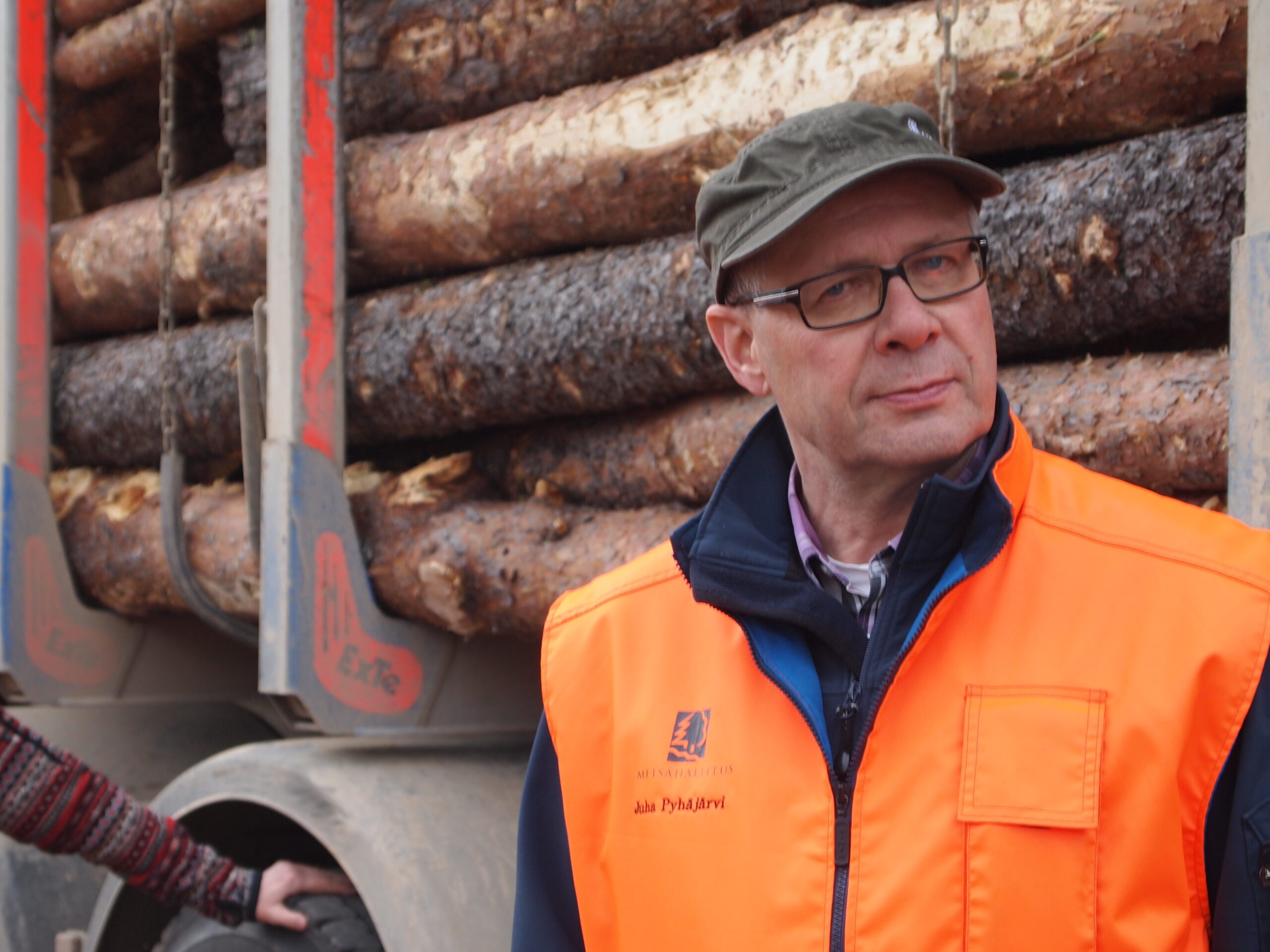Largest lorry in western Europe to start operating in Finnish Lapland

Ketosen Kuljetus, a company transporting timber for the state forest company Metsähallitus, is to start testing a 104-tonne timber lorry. Lorries of this size have so far never been tested in western Europe.
The test lorry, 33 metres in length, will only use the main road from Inari in Upper Lapland to the Finnish Railways timber terminal in Rovaniemi, where the timber is loaded in trains.
The testing permit only applies to one lorry. It consists of a tractor unit and one trailer. The combination has a total of 13 axles, ten of which are equipped with dual wheels.
The trailer can be loaded on the forest road and then coupled to the test lorry on a main road. The tractor unit can only be loaded by a main road at a terminal specially built for this.
The testing permit from the Finnish Transport Safety Agency is valid until the end of 2019. ”The purpose of the tests is to see whether it is possible to improve the efficiency of timber transport,” says Mr. Juha Pyhäjärvi, Chief of Procurement at the state forest company Metsähallitus.
The actual research is carried out by the Aalto University, the University of Oulu and the Metsäteho research company. ”The results will allow us to evaluate the effect of the large lorries on traffic safety and emissions, as well as the possibilities to decrease the burden caused by transport on roads,” says Pyhäjärvi.
One point of great interest during the test, especially in snowy winter conditions, is the long Magneettimäki hill on European Route E75, climbing up to the Saariselkä group of fells. According to simulator tests it should not be a problem. The test lorry has one of the most powerful engines found in standard-manufacture lorries, so it is expected to take the hill in its stride.
Pyhäjärvi is not concerned about the stability of the long trailer assembly in winter conditions. ”So far, experiences of almost equally long assemblies from southern Finland indicate that they may be even stabler than shorter ones,” says Pyhäjärvi.

Size of lorries has increased rapidly in Finland
The lorry test in Lapland is the second one in Finland with timber lorries carrying a large net load. The first test started in October 2014 in the regions surrounding Lake Saimaa in southern Finland. The 94-tonne lorry transports timber to the mills of the UPM forest industry company.
The legal framework for tests of this kind was enacted in 2013. The underlying reason is that efficient timber transport is essential for the competitive ability of forestry in a country with long distances such as Finland. Not so many years ago, the maximum weight of lorries was 60 tonnes, but at the moment weights of up to 76 tonnes are allowed.
The test lorry in Lapland carries double the amount of timber that a 60-tonne lorry does. At the same time, its fuel consumption as well as its carbon dioxide emissions are estimated to be 20 per cent less per one tonne of timber.
There was no need to improve the roads because of the test in Lapland, with the exception of installing traffic lights at the bridge over the Jeesiöjoki river. The test lorry has the right of way on the bridge, because of the risk that the bridge could not carry another heavy lorry at the same time.
The light is operated by the test lorry driver. In order to switch on the red light for oncoming traffic, the driver pushes a button in his cab some 150 metres before crossing the bridge.
Traffic safety is not at risk, but what about roads?

Metsähallitus delivers a considerable share of the timber used by the forest industry in northern Finland. And the transport companies are rapidly switching over to larger lorries.
All in all, there are some 150 lorries transporting timber for Metsähallitus in Finland. At present, not one of them is a 60-tonne lorry, and the 64-tonners only number 16.
At the moment the maximum allowable size of a lorry in Finland is 76 tonnes. Metsähallitus’ contractors own a total of 52 such lorries. The rest, 84 lorries, weigh 68 tonnes.
According to Pyhäjärvi, the contractors change over to larger lorries as and when new contracts are concluded. ”Normally our contracts run for four years, and this also sets the rate of renewal investments for the contractors: the goal is to amortise the investment during the contract period,” says Pyhäjärvi.
Some fear that large lorries could impair traffic safety. According to experiences to date, this is not so: it has not been observed that overtaking would be more dangerous and, on the other hand, the larger the lorries are, the fewer of them are needed on the road.
There are also concerns that the large lorries may place too much of a burden on the road structures. Against this it should be pointed out that their weight per axle and per unit of road surface is about the same as with smaller lorries, because they have more axles and dual wheels.
Previously in forest.fi: Lorries weighing up to 90 tons arriving on Finnish roads
Previously in forest.fi: It’s not the speed, but the volume: timber transport on rails

Kirjoita kommentti